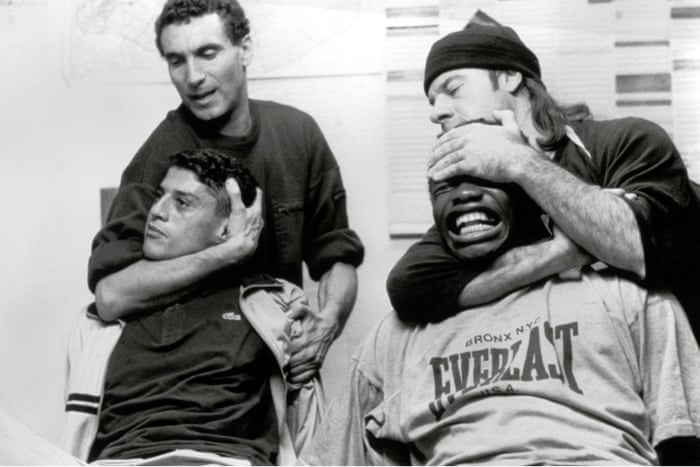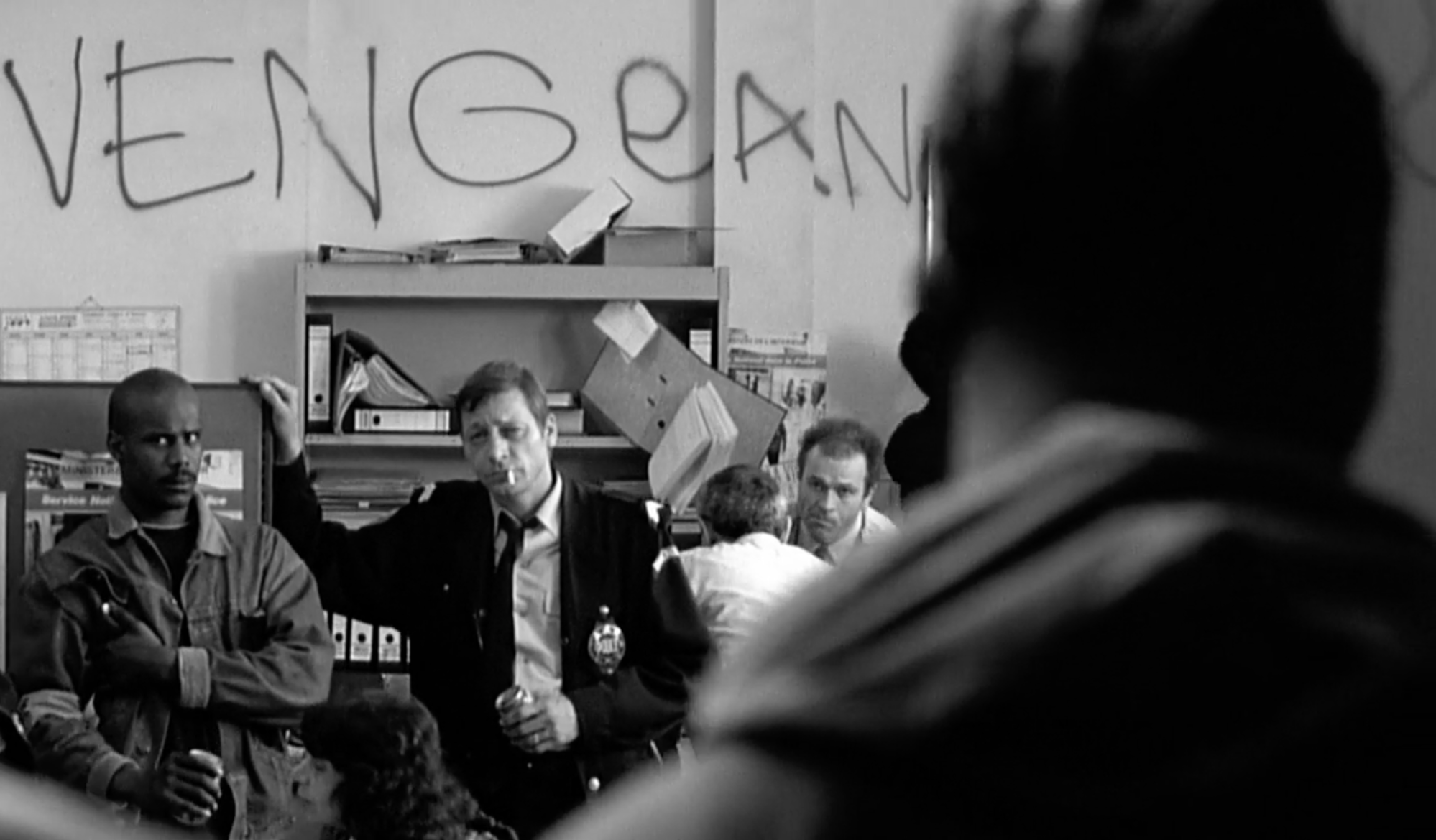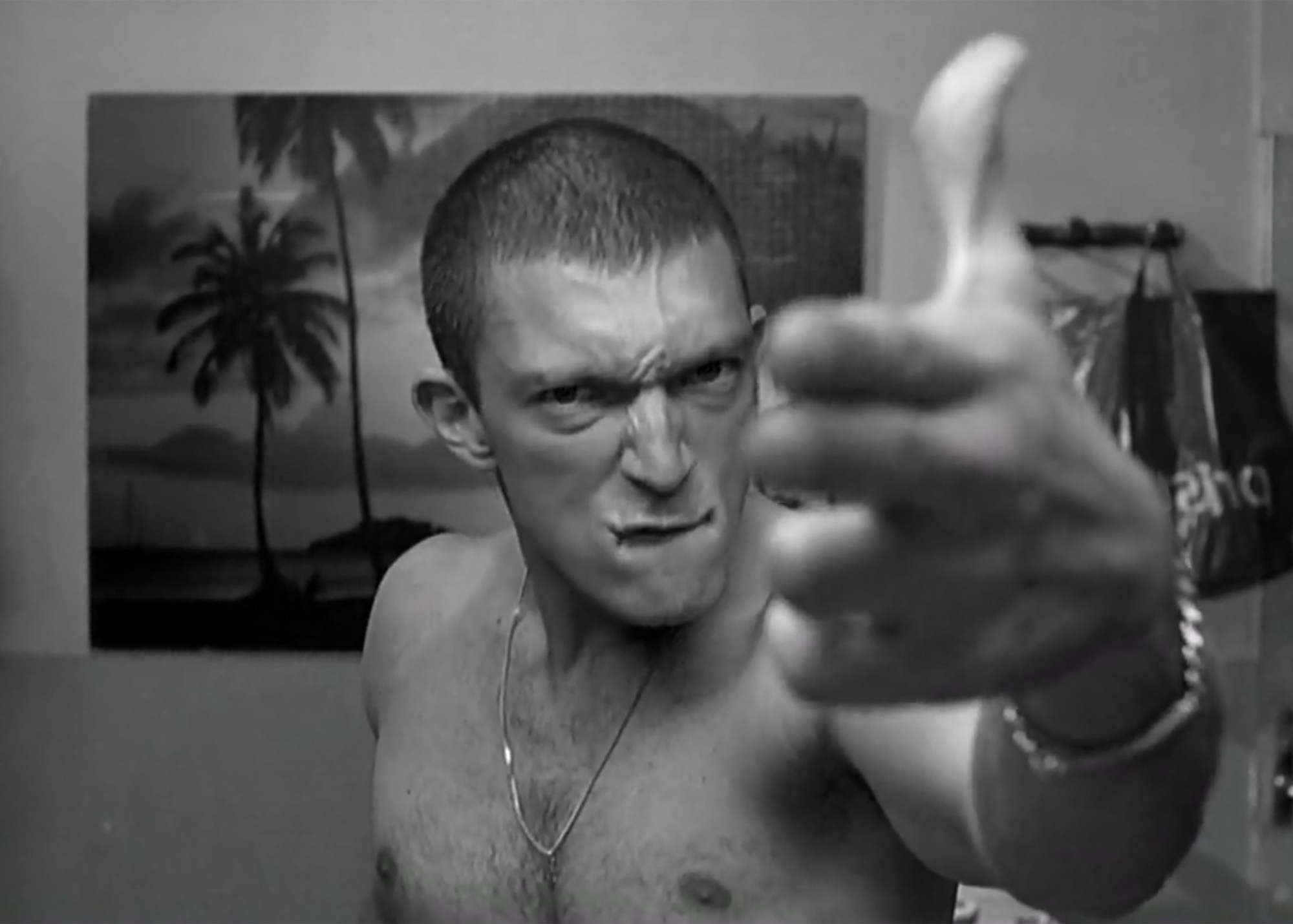Abuse of power. Unchecked prejudice. Oppressive systems of authority. The themes woven through Mathieu Kassovitz’ cult 1995 film La Haine are more relevant now than ever. Uncomfortable as it is to see a 25-year-old movie depicting the same problems that continue to plague our society today, La Haine — Hate — is a haunting example of how great art resonates across generations.
Set in the low-income suburbs of Paris (known as banlieues), the film follows three inseparable friends — Hubert (Hubert Koundé), Vinz (Vincent Cassel) and Saïd (Saïd Taghmaoui) — over 20 hours following riots sparked by police brutality in their neighbourhood. Violence erupts in their area after Abdel Ichaha — a young Arab man and friend of the trio — is beaten into a coma by the police.
Kassovitz began writing La Haine’s script on April 6th, 1993 — the day 17-year-old French-Congolese Makomé M’Bowole was shot and killed at point-blank range by Parisian police in the 18th arrondissement. M’Bowole had been arrested on suspicion of stealing cigarettes and was one of three unarmed youth killed by Paris police over a span of just four days. While La Haine was designed to underscore institutional violence and the fragility of national identity in the French context, M’Bowole’s real and Ichaha’s dramatised demise both mirror the police violence against Black people around the world we continue to witness, experience and read about in our daily lives.
Each principal character in La Haine brings a distinct energy to the film. Hotheaded and high-strung Vinz vows to kill an officer in retaliation if Abdel dies in hospital. Hubert is calm and thoughtful, the peacemaker of the group. Saïd is a mischievous shit disturber, causing trouble wherever he goes. The three aren’t much different from the young men we see in major cities today — decked in sportswear, smoking joints and obsessed with hip-hop culture. Despite their different personality traits, all three are filled with hate in nuanced and complicated ways.
As Black, Jewish and Arab youth living in the banlieues, Hubert, Vinz and Saïd are descendants of immigrant populations in France who often face racism and systemic violence. Traditionally, French national identity emphasises unity as one French people and does not acknowledge the differences among its citizens. In La Haine, these national values see the guys shunned by the country they are supposed to call home.

While Vinz, Hubert and Saïd walk the streets, scenes oscillate between pranks and dirty jokes between friends, violent clashes with police and bleak moments of boredom. Each segment is a snapshot of life in a neglected community where its disenfranchised youth have nothing meaningful to do. Forgotten by society and deprived of any real opportunities, it’s the intense feelings of isolation and hopelessness that drive the three friends to do reckless things.
The group roams the banlieues that look more like war-torn ruins than spots you would expect to see outside the French capital. Raggedy old buildings and torched cars serve as external symbols of the deep societal rifts and the anger the young men feel on behalf of their comatose friend. Though Hubert, Vinz and Saïd are all French citizens and can go anywhere they want in Paris, growing up in the impoverished suburbs has made them feel alienated from the city’s mainstream society. Sparks fly between banlieue and bourgeoisie as the guys get yelled at and kicked out of an upscale art gallery event they check out downtown.
The film’s cinematography is gritty, stylish and poetic. Shot entirely in 35mm Kodak black and white, La Haine’s vivid grey tones are a stark metaphor for the tensions brewing between the oppressor and the oppressed. From kinetic close-ups to bold aerial sequences, the film’s intricate camera work humanises the characters and their struggles while painting a textured picture of the fractured world they live in.
For several months during pre-production Kassovitz and the three main actors lived on location in the Chanteloup banelieue where the majority of the film was shot, sleeping on mattresses on the floor in one tiny apartment. They did this to immerse themselves in the lifestyle of the neighbourhoods they were about to portray, and also gain the trust of the people living there. Chanteloup residents eventually came to respect the cast and crew as people who would give their marginalised community a real voice. It’s what makes La Haine feel so real and less like a dramatic re-enactment.
Saïd and Hubert are sadistically abused while being held in police custody at one point in the film. Handcuffed and seated side by side, the two friends are choked, slapped and racially taunted by two plainclothes police demonstrating to an onlooking trainee officer “how it’s done.” The junior cop looks away and shakes his head at his colleagues’ ruthless behaviour, showing a brief moment of empathy. The other police notice and tell him “Don’t wimp out on us now. The hard part is stopping in time.” The scene is both incredibly disturbing and heartbreakingly timeless. What is depicted fictionally in La Haine is being filmed in real-time today — it’s glaringly obvious how little these broken and archaic institutions have changed in two-and-a-half decades.

“La Haine attire la haine” — “hate breeds hate” — Hubert says to a particularly angry and vengeful Vinz while trying to calm him down mid-way through the film. Brief as it is, the statement rings eerily relevant today. Falling victim to hate-fuelled attacks begins a vicious and inevitable cycle of pain and reciprocal hate. And as we continue to witness people of colour being disproportionately affected by police violence, how can anyone expect those communities to not hold deep contempt for the institutions that claim to protect them?
Why does a film made 25 years ago look like it could have been released last week? It’s no question that La Haine is a gripping and powerful social commentary that still speaks to our world’s problems even now, but it’s still just a film made by filmmakers. It’s up to the people in power to implement the policy changes and reforms we need so we won’t write about how relevant La Haine is 35 years later.

